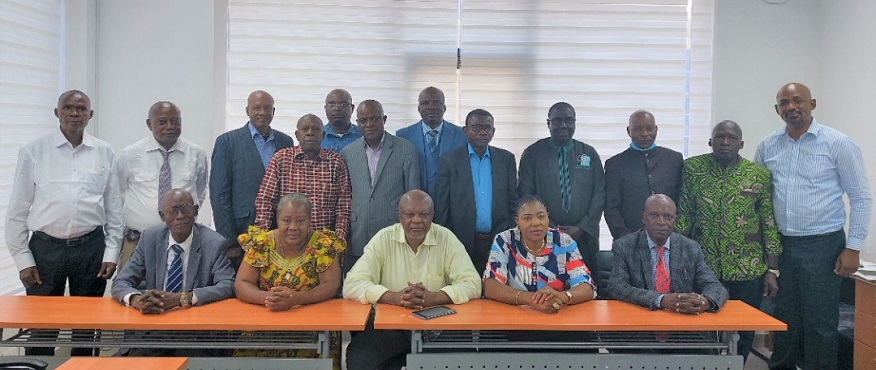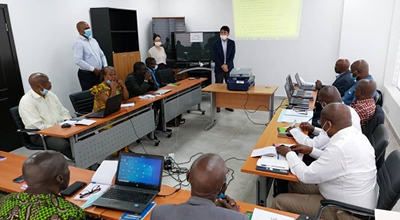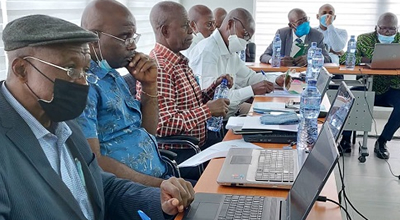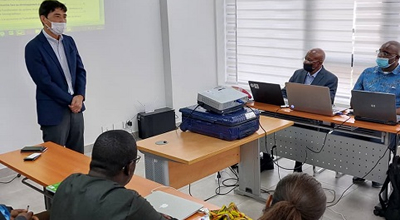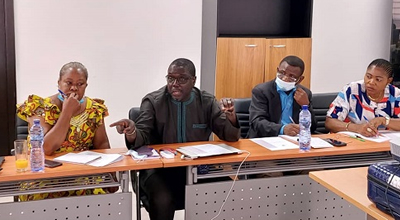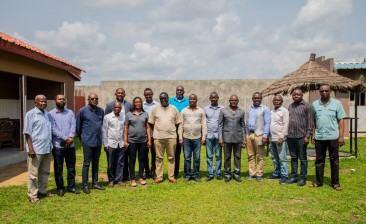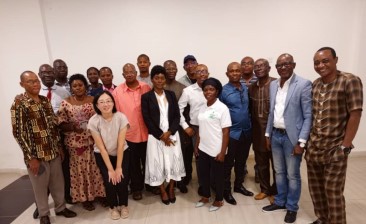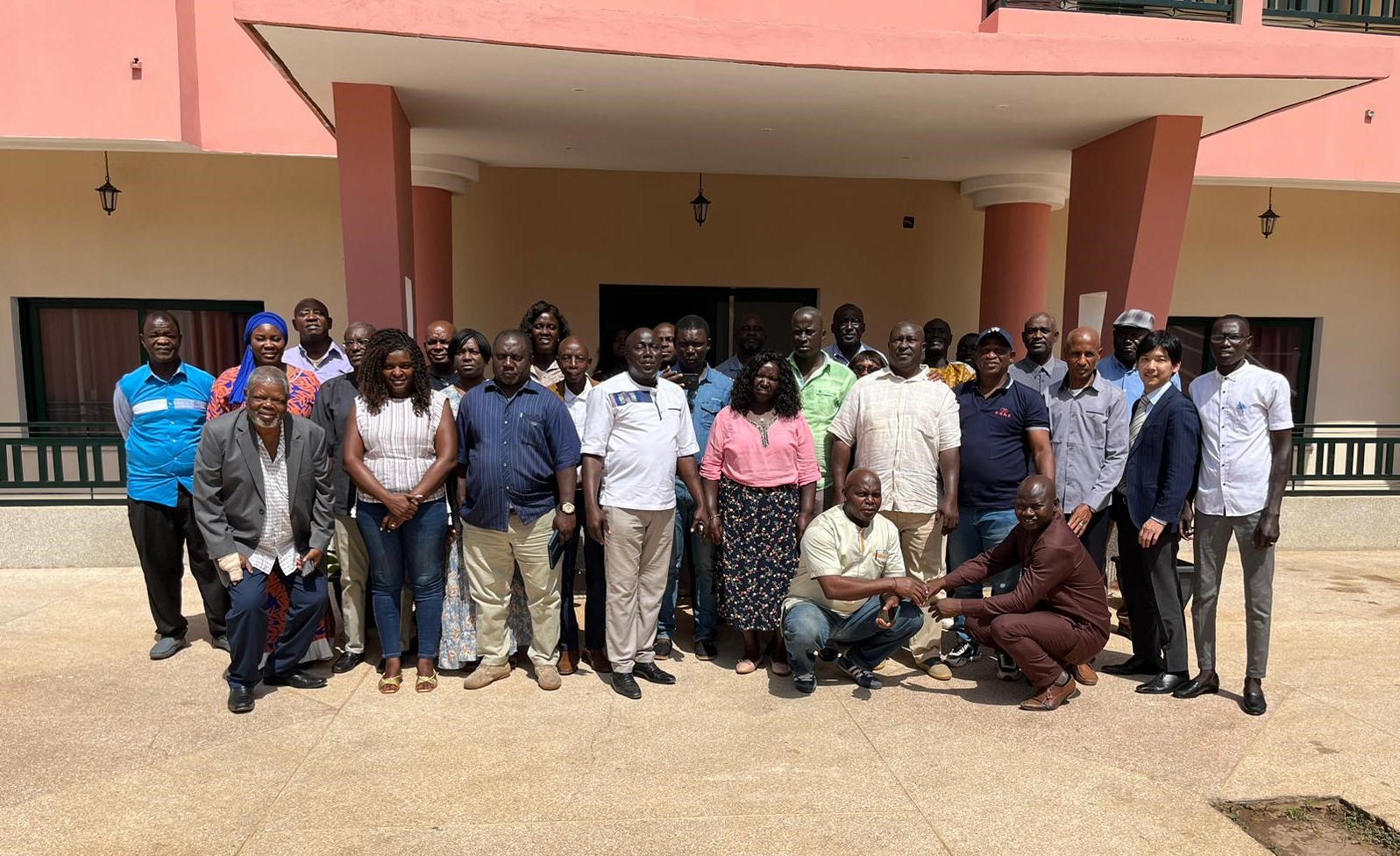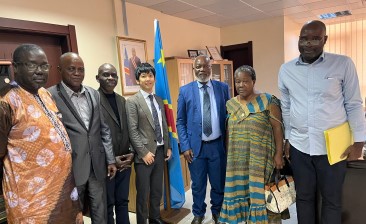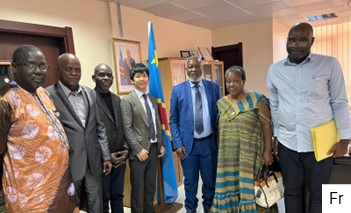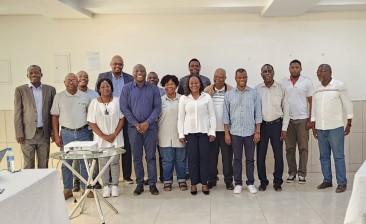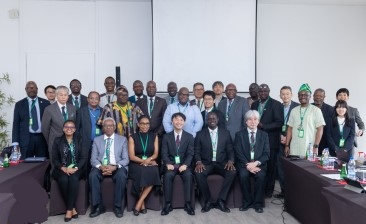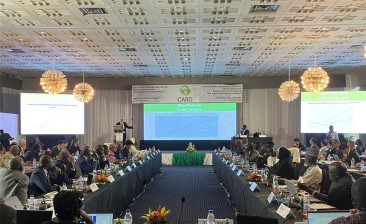DR Congo, June 2022
Working week on the finalization of DRC NRDS II
Background
The working week for finalizing the DRC’s NRDS II was held in the conference room of JICA DRC, Kinshasa, between 20th and 24th June 2022. The revision of NRDS was initiated by DRC government in 2018 with the support of CARD Secretariat. This working week was aimed at proofreading the latest draft, to complete the missing parts and to define and agree on realistic objectives to be achieved during the implementation phase of the new strategy.
Methodology and Opening Ceremony
The Task Force team was composed of 16 experts in the various segments of the rice value chain, drawn from the public sector, research institutes, donors, and farmers’ organization.
During the opening ceremony, Mr. Hironobu Murakami, Chief Representative of JICA DRC, recalled the importance of the workshop and indicated that this importance was due to the fact that in view of international political movements and the crisis in Ukraine, food security was a high priority of the country’s agricultural policy. From this point of view, the DRC had many challenges to face, including the promotion of rice cultivation. It was in this sense that he invited the participants to make pragmatic and realistic proposals.
Following the JICA Chief Representative, the CARD Regional Consultant, while recalling the objectives of CARD phase II and especially the RICE approach that should guide the process, welcomed the presence of the representatives of the producers’ organizations and indicated that producers and private sector were the most important participants because they would help to better understand the challenges related to rice production and would be the beneficiaries of what would come out of it.
During the working group session, the methodology consisted in starting from addressing the observations previously made by Task Force members, Provincial inspectors and technical and financial partners, followed by writing the missing parts as well as working on the logical framework and the action plan.
Key outputs/Results
In term of the results, it should be noted that the participants developed the final draft of NRDS2, which constitutes the frame of reference for all public interventions for the development of the rice sector.
The results also shows that it is necessary to apply a rice value chain approach in order to reach production levels of: (i) 1,463,239 tons of paddy in 2025; and (ii) 2,120,000 tons in 2030, which will require exceptional efforts from the government and its partners, with the participation of the rice value chain actors. To achieve these objectives, the actions to be implemented will have to focus mainly on strengthening the technical and operational capacities of stakeholders, developing rice production sites (with total and partial control of water), mobilizing production factors (certified seeds, fertilizers, agricultural equipment), improving processing and marketing, and supporting the opening up of production areas.
Specifically, the strategy has been subdivided into two phases:
First phase 2023-2025: This phase consists of accelerating the pace in order to overcome the challenges of productivity and competitiveness of the rice sector in DRC. In accordance with the country’s objective, the aim is to reach 1,463,239 tons of paddy in 2025. During this phase, 40,000 ha of irrigation schemes will be developed, 12.5% of which will be under total water control and 87.5% under partial water control. In terms of area, it is planned to plant nearly 652,000 ha of rainfed rice. In addition, 26,166 tons of certified seeds and 73,167 tons of urea and 146,334 tons of N-P-K 17-17-17 to be combined with organic fertilizer will be made available for a real intensification of rice production. In addition, actions will be promoted to provide access to mechanized services and modern processing techniques. A change in the approach to the financing of agricultural production factors will be implemented in order to provide for better interconnection of actors (contract farming). This change will involve, among others, the operationalization of the National Fund for the Development of Agriculture (FONADA). All these actions should enable the country to achieve rice self-sufficiency.
Second phase 2026-2030: It aims at developing more than 80,000 ha of irrigation schemes, including 10,000 ha under total water control. The following quantities of inputs will be required for development: 31,160 tons of certified seeds, 77,600 tons of urea, 155,200 tons of NPK 17-17-17 and 400,000 tons of organic fertilizer. In 2030, a production of 1,378,000 tons of white rice is expected to cover 100% of the country’s rice needs and generate a surplus.
Way forward
With these results, it is expected to continue the process in order to validate the document before the end of 2022 and later to organize a working week for developing concept notes, followed by the business meeting.
